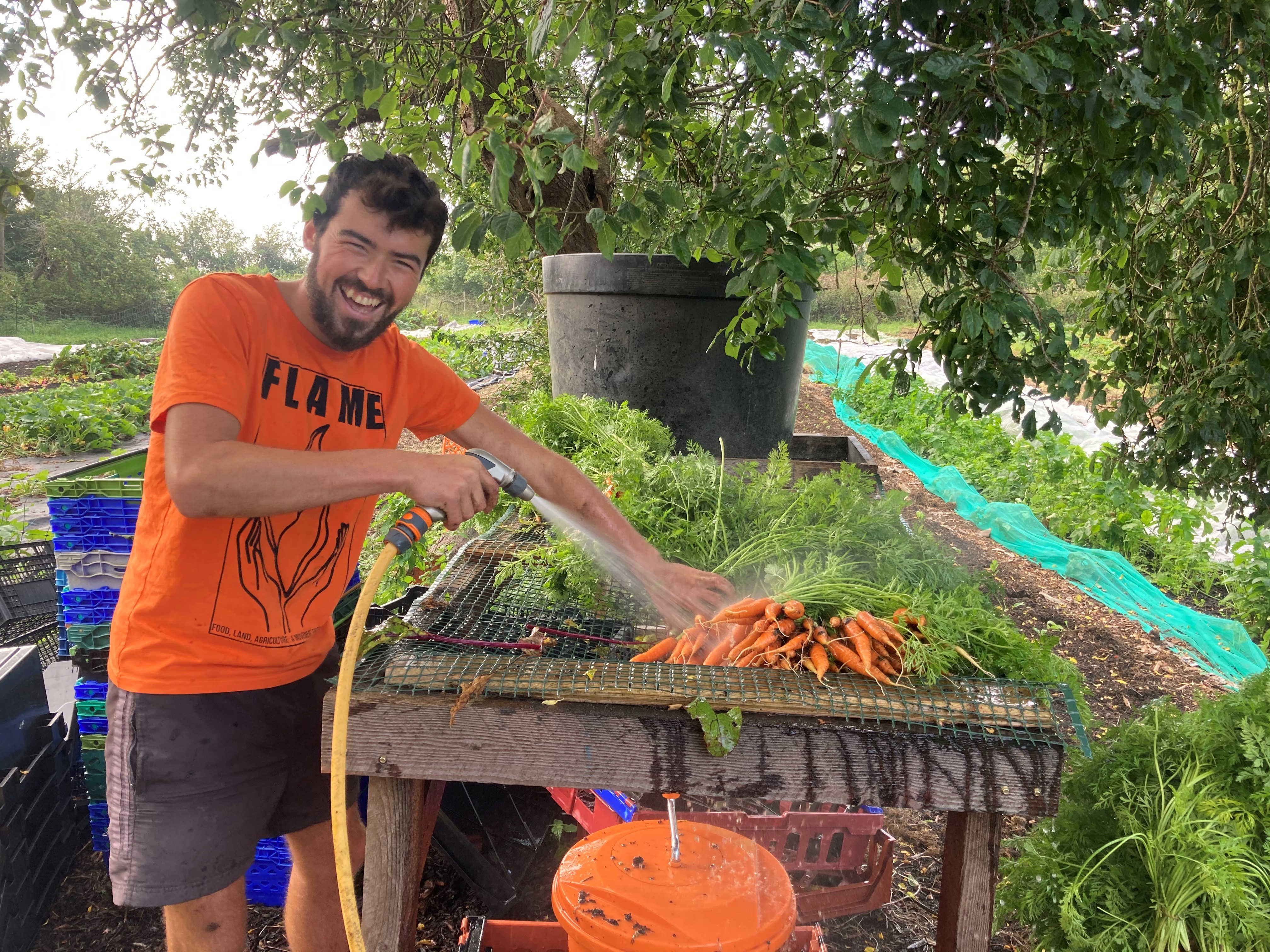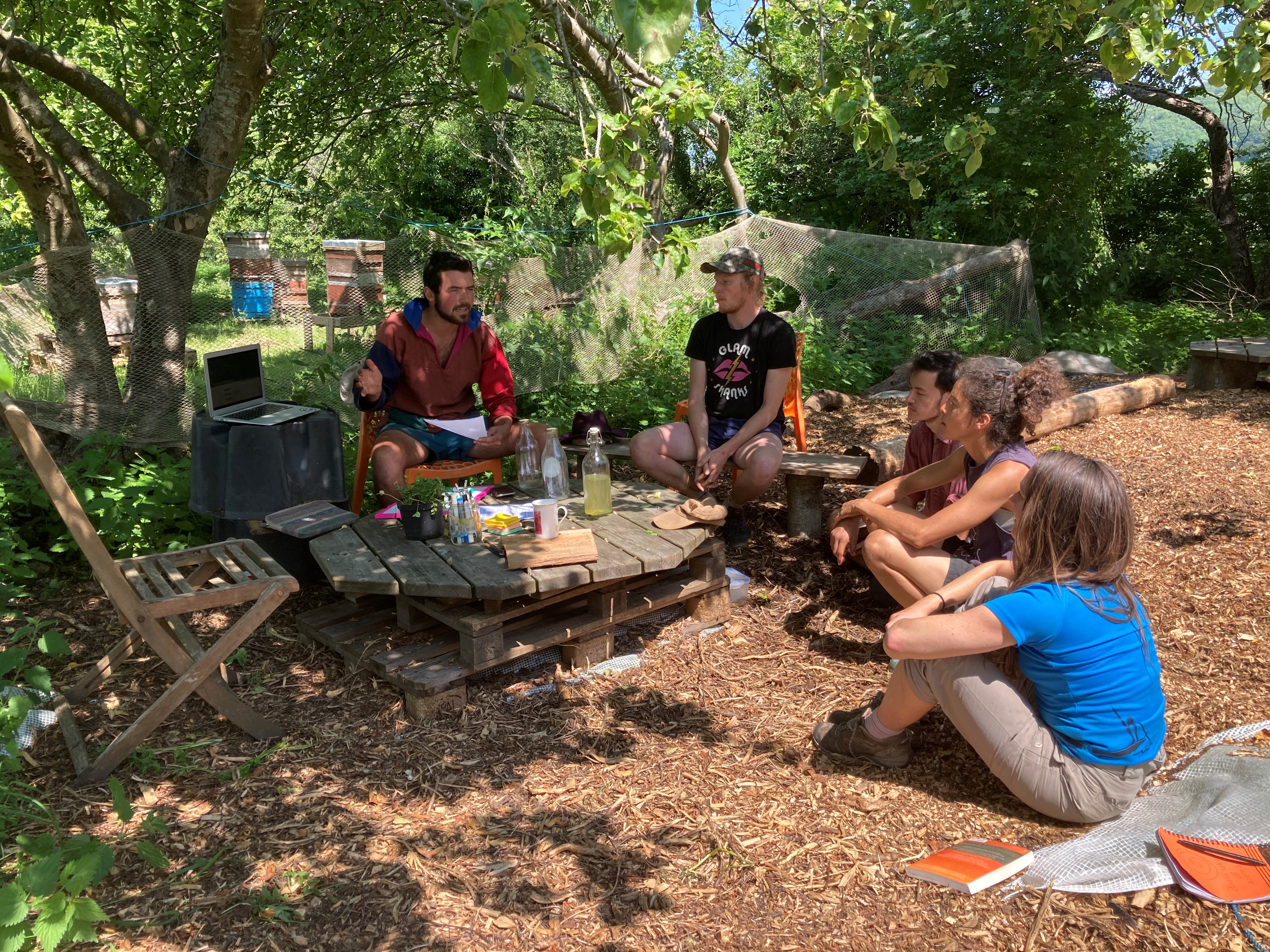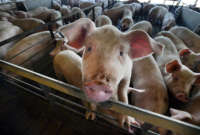According to Reuters, more than 500,000 farmers attended a rally in the city of Muzaffarnagar in the Indian state of Uttar Pradesh on 5 September. Hundreds of thousands more turned out for other rallies in the state.
Rakesh Tikait, a prominent farmers’ leader, said this would breathe fresh life into the Indian farmers’ protest movement.
He added:
We will intensify our protest by going to every single city and town of Uttar Pradesh to convey the message that Modi’s government is anti-farmer.
Tikait is a leader of the protest movement and a spokesperson of the Bharatiya Kisan Union (Indian Farmers’ Union).
Since November 2020, tens of thousands of farmers have been encamped on the outskirts of Delhi in protest against three new farm laws that will effectively hand over the agrifood sector to corporates and place India at the mercy of international commodity and financial markets for its food security.
Aside from the rallies in Uttar Pradesh, thousands more farmers recently gathered in Karnal in the state of Haryana to continue to pressurise the Modi-led government to repeal the laws. This particular protest was also in response to police violence during another demonstration, also in Karnal (200 km north of Delhi), during late August when farmers had been blocking a highway. The police Lathi-charged them and at least 10 people were injured and one person died from a heart attack a day later.
A video that appeared on social media showed Ayush Sinha, a top government official, encouraging officers to “smash the heads of farmers” if they broke through the barricades placed on the highway.
Haryana Chief Minister Manohar Lal Khattar criticised the choice of words but said that “strictness had to be maintained to ensure law and order”.
But that is not quite true. “Strictness” – outright brutality – must be imposed to placate the scavengers abroad who are circling overhead with India’s agrifood sector firmly in their sights. As much as the authorities try to distance themselves from such language – ‘smashing heads’ is precisely what India’s rulers and the billionaire owners of foreign agrifood corporations require.
The government has to demonstrate to global agricapital that it is being tough on farmers in order to maintain ‘market confidence’ and attract foreign direct investment in the sector (aka the takeover of the sector).
The farmers’ protest in India represents a struggle for the heart and soul of the country: a conflict between the local and the global. Large-scale international agribusiness, retailers, traders and e-commerce companies are trying to displace small- and medium-size indigenous producers and enterprises and restructure the entire agrifood sector in their own image.
By capitulating to the needs of foreign agrifood conglomerates – which is what the three agriculture laws represent – India will be compelled to eradicate its buffer food stocks. It would then bid for them with borrowed funds on the open market or with its foreign reserves.
This approach is symptomatic of what has been happening since the 1990s, when India was compelled to embrace neoliberal economics. The country has become increasingly dependent on inflows of foreign capital. Policies are being governed by the drive to attract and retain foreign investment and maintain ‘market confidence’ by ceding to the demands of international capital which rides roughshod over democratic principles and the needs of hundreds of millions of ordinary people.
The authorities know they must be seen to be acting tough on farmers, thereby demonstrating a steely resolve to foreign agribusiness and investors in general.
The Indian government’s willingness to cede control of its agrifood sector would appear to represent a victory for US foreign policy.
Economist Prof Michael Hudson stated in 2014:
American foreign policy has almost always been based on agricultural exports… It’s by agriculture and control of the food supply that American diplomacy has been able to control most of the Third World. The World Bank’s geopolitical lending strategy has been to turn countries into food deficit areas by convincing them to grow cash crops – plantation export crops – not to feed themselves with their own food crops.
On the back of India’s foreign exchange crisis in the 1990s, the IMF and World Bank wanted India to shift hundreds of millions out of agriculture. In return for up to more than $120 billion in loans at the time, India was directed to dismantle its state-owned seed supply system, reduce subsidies, run down public agriculture institutions and offer incentives for the growing of cash crops to earn foreign exchange.
The drive is to drastically dilute the role of the public sector in agriculture, reducing it to a facilitator of private capital and leading to the entrenchment of industrial farming and the replacement of small-scale farms.
Smashing protesters’ heads
A December 2020 photograph published by the Press Trust of India defines the Indian government’s approach to protesting farmers. It shows a security official in paramilitary garb raising a lathi. An elder from the Sikh farming community was about to feel its full force.
But “smashing the heads of farmers” is symbolic of how near-totalitarian ‘liberal democracies’ the world over now regard many within their own populations.
The right to protest and gather in public as well as the right of free speech has been suspended in Australia, which currently resembles a giant penal colony as officials pursue a nonsensical ‘zero-COVID’ policy. Across Europe and in the US and Israel, unnecessary and discriminatory ‘COVID passports’ are being rolled out to restrict freedom of movement and access to services. And those who protest against any of this are often confronted by a massive, intimidating police presence (or actual police violence) and media smear campaigns.
Again, governments must demonstrate resolve to their billionaire masters in Big Finance, the Gates and Rockefeller Foundations, the World Economic Forum and the entire gamut of forces in the military-financial industrial complex behind the ‘Great Reset’, ‘4th Industrial Revolution, ‘New Normal’ or whichever other benign-sounding term its political and media lackeys use to disguise the restructuring of capitalism and the brutal impacts on ordinary people.
This too, like the restructuring of Indian agriculture – which will affect India’s entire 1.3-billion-plus population – is also part of a US foreign policy agenda that serves the interests of the Anglo-US elite.
COVID has ensured that trillions of dollars have been handed over to elite interests, while lockdowns and restrictions have been imposed on ordinary people and small businesses. The winners have been the likes of Amazon, Big Pharma and the tech giants. The losers have been small enterprises and the bulk of the population, deprived of their right to work and the entire panoply of civil rights their ancestors struggled and often died for. If a masterplan is required to deliver a knockout blow to small enterprises for the benefit of global players, then this is it.
Professor Michel Cossudovsky of the Centre for Research on Globalization says:
The Global Money financial institutions are the ‘creditors’ of the real economy which is in crisis. The closure of the global economy has triggered a process of global indebtedness. Unprecedented in World history, a multi-trillion bonanza of dollar denominated debts is hitting simultaneously the national economies of 193 countries.
In August 2020, a report by the International Labour Organization (ILO) stated:
The COVID-19 crisis has severely disrupted economies and labour markets in all world regions, with estimated losses of working hours equivalent to nearly 400 million full-time jobs in the second quarter of 2020, most of which are in emerging and developing countries.
Among the most vulnerable are the 1.6 billion informal economy workers, representing half of the global workforce, who are working in sectors experiencing major job losses or have seen their incomes seriously affected by lockdowns. Most of the workers affected (1.25 billion) are in retail, accommodation and food services and manufacturing. And most of these are self-employed and in low-income jobs in the informal sector.
India was especially affected in this respect when the government imposed a lockdown. The policy ended up pushing 230 million into poverty and wrecked the lives and livelihoods of many. A May 2021 report prepared by the Centre for Sustainable Employment at Azim Premji University (APU) has highlighted how employment and income had not recovered to pre-pandemic levels even by late 2020.
The report, ‘State of Working India 2021 – One year of Covid-19’ highlights how almost half of formal salaried workers moved into the informal sector and that 230 million people fell below the national minimum wage poverty line.
Even before COVID, India was experiencing its longest economic slowdown since 1991 with weak employment generation, uneven development and a largely informal economy. A recent article by the Research Unit for Political Economy highlights the structural weaknesses of the economy and the often desperate plight of ordinary people.
To survive Modi’s lockdown, the poorest 25% of households borrowed 3.8 times their median income, as against 1.4 times for the top 25%. The study noted the implications for debt traps.
Six months later, it was also noted that food intake was still at lockdown levels for 20% of vulnerable households.
Meanwhile, the rich were well taken care of. According to Left Voice:
The Modi government has handled the pandemic by prioritising the profits of big business and protecting the fortunes of billionaires over protecting the lives and livelihoods of workers.
Michel Chossudovsky says that governments are now under the control of global creditors and that the post-Covid era will see massive austerity measures, including the cancellation of workers’ benefits and social safety nets. An unpayable multi-trillion dollar public debt is unfolding: the creditors of the state are Big Money, which calls the shots in a process that will lead to the privatisation of the state.
Between April and July 2020, the total wealth held by billionaires around the world has grown from $8 trillion to more than $10 trillion. Chossudovsky says a new generation of billionaire innovators looks set to play a critical role in repairing the damage by using the growing repertoire of emerging technologies. He adds that tomorrow’s innovators will digitise, refresh and revolutionise the economy: but, as he notes, let us be under no illusions these corrupt billionaires are impoverishers.
With this in mind, a recent piece on the US Right To Know website exposes the Gates-led agenda for the future of food based on the programming of biology to produce synthetic and genetically engineered substances. The thinking reflects the programming of computers in the information economy. Of course, Gates and his ilk have patented, or are patenting, the processes and products involved.
For example, Ginkgo Bioworks, a Gates-backed start-up that makes ‘custom organisms’, recently went public in a $17.5 billion deal. It uses ‘cell programming’ technology to genetically engineer flavours and scents into commercial strains of engineered yeast and bacteria to create ‘natural’ ingredients, including vitamins, amino acids, enzymes and flavours for ultra-processed foods.
Ginkgo plans to create up to 20,000 engineered ‘cell programs’ (it now has five) for food products and many other uses. It plans to charge customers to use its ‘biological platform’. Its customers are not consumers or farmers but the world’s largest chemical, food and pharmaceutical companies.
Gates pushes fake food by way of his greenwash agenda. If he really is interested in avoiding ‘climate catastrophe’, helping farmers or producing enough food, instead of cementing the power and the control of corporations over our food, he should be facilitating community-based and lead agroecological approaches.
But he will not because there is no scope for patents, external proprietary inputs, commodification and dependency on global corporations which Gates sees as the answer to all of humanity’s problems in his quest to bypass democratic processes and roll out his agenda.
India should take heed because this is the future of ‘food’. If the farmers fail to get the farm bills repealed, India will again become dependent on food imports or on foreign food manufacturers and lab-made ‘food’. Fake food will displace traditional diets and cultivation methods will be driven by drones, genetically engineered seeds and farms without farmers, devastating the livelihoods (and health) of hundreds of millions.
This is a vision of the future courtesy of Klaus Schwab’s (of the elitist World Economic Forum) dystopic transhumanism and the Rockefellers’ 2010 lockstep scenario: genetically engineered food and genetically engineered people controlled by a technocratic elite whose plans are implemented through tighter top-down government control and more authoritarian leadership.
Since March 2020, we have seen the structural adjustment of the global capitalist system and labour’s relationship to it and an attempted adjustment of people’s thinking via endless government and media propaganda.
Whether it involves India’s farmers or the frequent rallies and marches against restrictions and COVID passports across the world, there is a common enemy. And there is also a common goal: liberty.
The post
Smashing The Heads of Farmers: A Global Struggle Against Tyranny first appeared on
Dissident Voice.
This post was originally published on Dissident Voice.









 (@KTeaiwa)
(@KTeaiwa) 

